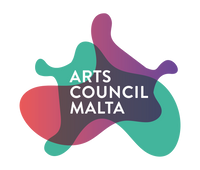RaymondMahoney
Biography
Author, poet, playwright and lyricist Raymond Mahoney, was born on 1 June 1949, in St Julian’s, Malta. He began his career as a journalist before becoming senior manager at a local bank. Later, he served as a director at an investment finance bank. Mahoney died on 26 July 2023, at the age of 74.
Jump to bibliography
He was a co-founder of the Moviment Qawmien Letterarju (Movement for the Promotion of Literature) and an award-winning songwriter. He penned the acclaimed rock opera Ġensna (‘Our People’, 1982) and Bastilja (‘Bastille’, 1989). A well-known radio and television presenter, he also wrote musicals, including an adaptation of Juann Mamo’s novel Ulied in-Nanna Venut fl-Amerka (‘Grandma Venut’s Offspring in America’, 1991). His other works, such as Żeża tal-Flagship (‘Żeża of the Flagship’, 1996) and It-Tieġ ta’ Karmena Abdilla (‘Karmena Abdilla’s Wedding’, 1999), are regarded as local classics.
Mahoney also gained recognition as a song lyricist. His 1991 song ‘Could it Be’, performed by Paul Giordmaina and Georgina, placed sixth in the Eurovision Song Contest in Rome. The following year, ‘Little Child’, sung by Mary Spiteri, secured third place in Sweden.
In his poetry, Mahoney explores psychological conflicts and the struggle for meaningful connection with others. For instance, in ‘Il-Lejla’ (‘This Evening’), the poet seeks refuge and meaning while contending with a hostile environment. The pouring rain and the punishing temperature are a manifestation of his existential angst, forces that are both the source of his torment and the harbinger of bittersweet solace. Moonlight, often associated with intuition and veiled truths, here serves only to illuminate his misery. He senses the existence of a better place yet feels barred from reaching it. Doubt creeps into his search as he laments: bit-tama / li nsib moħbija n-nota rżina / tlift l-għanja li kont naf (‘in the hope / of finding the hushed hidden note / I lost the song I once knew’). The poem leaves the reader questioning whether he has lost sight of the bigger picture, missing the woods for the trees.
The images of bad weather and water are also present in Mahoney’s short poem ‘Tħallihx’ (‘Don’t Leave Him’). Here the storm, an overwhelming force descending from above, symbolises an obstacle imposed by a higher power beyond the poet’s control. He likens himself to a powerless sparrow, overwhelmed by life’s harshness which borders on cruelty. Soaked and unable to fly, his wings, which are meant to help him soar, become a burden instead. This contradiction confounds him: why grant wings only to render them useless?
In ‘Gawwi’ (‘Seagulls’), Mahoney once again identifies with a bird, finding himself in the midst of an existential crisis. The seagull, exhausted and drenched from battling a storm, embodies his own struggles. Yet, this time, the beloved’s smile offers redemption, allowing him to embrace their connection with a cry of relief. Like the seagull, he navigates multiple realms – land, sea, and air – seeking balance among them.
Raymond Mahoney was an artist who confidently moved between the commercial and the introspective, proving that these elements are not mutually exclusive but can in fact enhance one another.
Biography written by Noel Tanti
